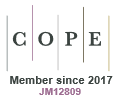Field enclosure experiments on the technique of poisoning the rabbit, Oryctolagus Cuniculus (L.) 1. A study of the total daily intake of bait during free-feeding
I Rowley
CSIRO Wildlife Research
2(1) 5 - 18
Published: 1957
Abstract
Experiments were designed to assess the suitability of enclosure techniques for investigating poisoning methods used in the control of the wild rabbit, Oryctolagus cuniculus (L.). Similar groups of individually marked and easily recognizable rabbits were established in the enclosures and their reactions to normal poisoning procedure (drawing the furrow, free-feeding, and poisoning) watched and recorded. The importance of the furrow is emphasized and an explanation offered. Consumption of free-feed appears to increase approximately twofold on successive nights once the rabbits start to eat the bait. The duration of this build-up varies with season and population and may be interrupted by weather or disturbance. In one instance only was the peak of free-feed consumption reached; all the rabbits were known to be feeding and the per capita nightly consumption was 1 lb 5 oz of carrot. After an interval of 7 weeks between successive free-feeds, the rabbits resumed eating carrot immediately and at nearly the same level as previously. This suggests that intermittent free-feeding, as practised in R'ew Zealand, may be worth further investigation. The experiments were terminated with sodium fluoroacetate or strychnine. Both poisons achieved good kills, the former being more consistent.https://doi.org/10.1071/CWR9570005
© CSIRO 1957


